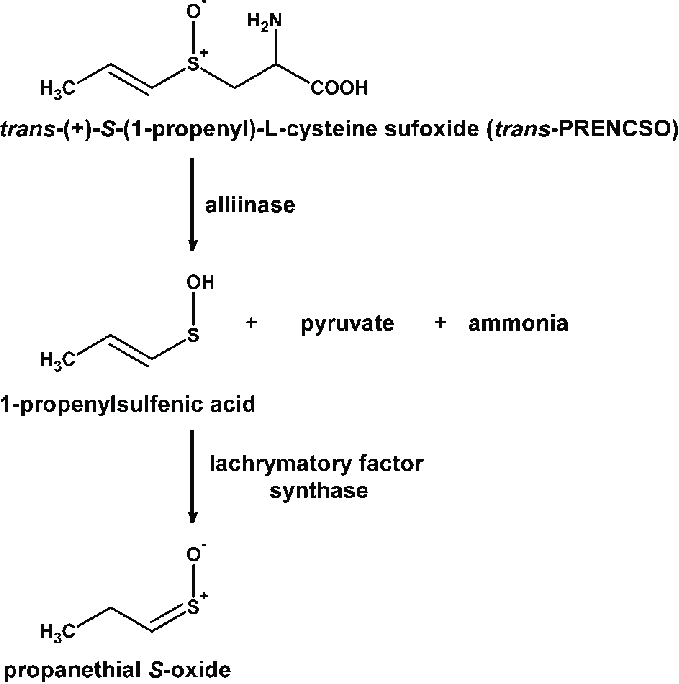Unlocking the Secrets of Onion Slice Sizes: How They Shape Flavor and Taste
- Jeeva Nanthan
- Mar 14
- 3 min read
Ever wondered why your dishes taste different depending on how you slice your onions? It turns out that the size and method of cutting onions unlock a world of chemical reactions that can significantly alter their flavor and aroma. Let's dive into how we slice onions impacts our culinary creations!
The Science Behind The Onion Flavour

When you cut into an onion, you trigger a series of chemical reactions. The enzyme alliinase mixes with sulfur-containing compounds, specifically S-1-propenyl-L-cysteine sulfoxide (PRENCSO), producing sulfenic acids. These acids quickly rearrange to form syn-propanethial-S-oxide, the compound responsible for the onion's pungent aroma and eye-watering effect. The amount of surface area exposed during slicing influences the intensity of these reactions. Different cutting methods expose varying amounts of the cell surface, altering the release of flavor compounds.
Why onion makes you cry?
One of the most familiar reactions when slicing onions is the irritating, eye-watering sensation. The release of syn-propanethial-S-oxide, a volatile sulfur compound causes this. When this compound evaporates, it reacts with the moisture in our eyes to form sulfuric acid. This mild acid irritates the eyes, triggering the lacrimal glands to produce tears to flush out the irritant. Finer cuts expose more cells, releasing more of this compound and intensifying the stinging sensation. Cooling onions before cutting or using sharp knives can minimize this effect by reducing the enzymatic reaction.
How Cutting Methods Influence Flavor Release

The size of onion slices is key to how quickly and intensely flavors develop. Once sliced, onions begin releasing volatile organic compounds (VOCs) within minutes. Studies have shown that smaller cuts increase the surface area, accelerating the enzymatic reaction and producing a more intense flavor. These compounds evolve, with flavor intensity peaking about 60 minutes after cutting. This means that the timing of when you add onions to a dish can be just as important as how you cut them!
Cooking Considerations for Different Slice Sizes
Thin Slices: Ideal for caramelization due to even heat distribution, resulting in sweeter, more complex flavors. The Maillard reaction, a chemical reaction between amino acids and reducing sugars, is more efficient with thin slices due to increased surface area exposure.
Thick Slices: Hold their structure longer and release flavors more slowly, making them perfect for slow-cooked dishes. Larger slices undergo pyrolysis at high heat, contributing to umami-rich flavors.
Diced Onions: Best for quick-cooking recipes as they release their flavors rapidly. The rapid release of sulfur compounds enhances the initial burst of flavor in sautéed dishes.
Temperature and Cooking Duration Matter
Cooking temperature interacts with slice size to shape flavor development:
Low Heat + Thin Slices: Faster caramelization and sweeter flavors. Prolonged low-heat cooking breaks down fructans, natural sugars in onions, into simpler sugars that caramelize easily.
Low Heat + Thick Slices: Gradual flavor development and texture retention. Thick slices preserve water content longer, moderating flavor release and contributing to a meaty texture.
Adjusting your cooking temperature based on slice size can enhance your dish's overall taste!
Practical Tips for Enhancing Flavor
For quick sautés or stir-fries, use finely diced onions to release flavor fast.
For slow-cooked meals like stews or onion soup, use thicker slices to develop deep, rich flavors over time.
Caramelizing onions? Thin, uniform slices work best for even browning and sweetness. Stir frequently to ensure uniform Maillard reactions and prevent burning.
Conclusion: Slice Smarter, Cook Better
The way you cut your onions is more than a visual choice, it's a flavor game-changer. Understanding how slice size influences flavor can help you make better decisions in the kitchen. So, how do you slice your onions for different dishes? Have you noticed how it changes the flavor? Let's discuss it!
Jeevananthan M
B. Tech Biotechnology
Undergraduate Student
References
Saucy Dressings. (n.d.). Be The Red, White, Yellow, Spring; and Alliums, Shallots, Leeks... Retrieved from https://www.saucydressings.com/blog/guide-to-onions/
eGullet Forums. (2002). Big Onions - Cooking. Retrieved from https://forums.egullet.org/topic/8761-big-onions/
Frontiers in Nutrition. (2024). Effects of Different Preparation and Cooking Processes on Onions. Retrieved from https://www.frontiersin.org/journals/nutrition/articles/10.3389/fnut.2024.1350534/full
PMC. (2022). Characterization of the Volatile Compounds of Onion with Different Preparation Methods. Retrieved from https://pmc.ncbi.nlm.nih.gov/articles/PMC9736120/
Compound Interest. (2014). The Eye-Watering Chemistry of an Onion. Retrieved from https://www.compoundchem.com/2014/01/22/the-chemistry-of-an-onion/
Allrecipes. (2023). How to Caramelize Onions. Retrieved from https://www.allrecipes.com/article/how-to-caramelize-onions-step-by-step
Image credits:




Comments